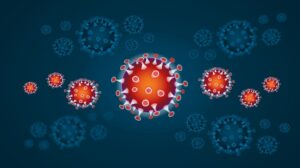Unlocking Immunity: How Your Immune System Fights Off Disease
Introduction
The human immune system is a remarkable network that plays a vital role in defending the body against foreign invaders. Pathogens, such as bacteria, viruses, fungi, and parasites, constantly threaten our health. This article explores the fundamentals of the immune system, how it operates to combat disease, and the effects of lifestyle choices on its efficacy. By understanding these mechanisms, we can enhance our immunity and promote better health.
The Immune System: An Overview
The immune system is composed of various organs, cells, and proteins that work together to fend off infections. It can be broadly categorized into two types: the innate immune system and the adaptive immune system.
1. Innate Immune System
The innate immune system is the body’s first line of defense. It acts quickly and non-specifically against pathogens. Components include:
- Physical Barriers: The skin and mucous membranes act as the initial physical barriers to infection.
- Phagocytic Cells: Cells such as macrophages and neutrophils engulf and destroy pathogens through a process known as phagocytosis.
- Natural Killer (NK) Cells: These cells identify and kill infected or cancerous cells by releasing cytotoxic granules.
- Complement System: A group of proteins that work together to opsonize pathogens, making them easier for phagocytes to identify.
2. Adaptive Immune System
The adaptive immune system is slower to respond but provides a specific and durable defense against pathogens. Key elements include:
- Lymphocytes: B cells and T cells are the main types of lymphocytes.
- B Cells: These are responsible for producing antibodies that target specific pathogens.
- T Cells: T helper cells assist in activating B cells and cytotoxic T cells, which kill infected cells directly.
- Memory Cells: After an infection, some B and T cells become memory cells, allowing the immune system to respond more swiftly upon re-exposure to the same pathogen.
How the Immune System Responds to Pathogens
The immune response can be broken down into several critical processes:
1. Recognition of Pathogens
Pathogen recognition is the first step in the immune response. Innate immune cells have pattern recognition receptors (PRRs) that identify pathogen-associated molecular patterns (PAMPs). This recognition triggers an inflammatory response and the recruitment of more immune cells to the site of infection [^1].
2. Activation of Immune Components
Once a pathogen is recognized, various immune components are activated. For instance, inflammatory cytokines are released, which attract more immune cells. Dendritic cells play a significant role in bridging the innate and adaptive immune responses by presenting antigens to T cells in lymph nodes [^2].
3. Elimination of Pathogens
The actual elimination of pathogens can happen through several mechanisms. Phagocytes engulf and digest pathogens, while antibodies produced by B cells neutralize them and mark them for destruction. Cytotoxic T cells directly kill infected cells [^3].
4. Resolution and Memory Formation
After the infection is cleared, the immune system downregulates its response, leading to the resolution of inflammation. Some immune cells remain as memory cells, enabling the body to fight off future infections more efficiently [^4].
Factors Influencing Immune Function
While the immune system is inherently robust, various factors can influence its effectiveness, including:
1. Nutrition
Proper nutrition is vital for maintaining a well-functioning immune system. Key nutrients include:
- Vitamins: Vitamin C, D, and E are crucial for immune function. For instance, Vitamin C enhances the function of phagocytes, while Vitamin D modulates the immune response [^5].
- Minerals: Zinc is essential for the development of immune cells, particularly T cells [^6].
- Antioxidants: Foods high in antioxidants, such as fruits and vegetables, help reduce oxidative stress on immune cells.
2. Exercise
Regular physical activity positively affects the immune system. Moderate exercise increases circulation and enhances the distribution of immune cells throughout the body [^7]. However, excessive exercise can suppress immune function, emphasizing the need for balance.
3. Sleep
Adequate sleep is crucial for a robust immune response. Sleep deprivation impairs the production of cytokines, which are vital for managing inflammation and infection [^8]. Aiming for 7-9 hours of quality sleep each night can significantly impact immune function.
4. Stress
Chronic stress has a detrimental effect on the immune system. It can lead to the production of stress hormones like cortisol, which suppress the immune response [^9]. Stress management techniques such as mindfulness, meditation, and exercise can help mitigate these effects.
5. Age and Genetics
Ageing is associated with a decline in immune function, known as immunosenescence. This makes older adults more susceptible to infections and illnesses. Genetic factors also play a role in determining an individual’s immune response, affecting how effectively it can fight off disease [^10].
The Role of Vaccination
Vaccines play a pivotal role in enhancing immunity by mimicking an infection. They stimulate the adaptive immune system, leading to the formation of memory cells without causing the disease. The global fight against infectious diseases like polio, measles, and more recently COVID-19 has been significantly bolstered by vaccination efforts.
1. How Vaccination Works
Vaccines expose the immune system to a harmless version or component of a pathogen, prompting the production of antibodies. When exposed to the actual pathogen in the future, the immune system can mount a faster and more effective response.
2. Herd Immunity
Vaccination also contributes to herd immunity, where a significant portion of a community is immunized, thereby providing indirect protection to those who cannot be vaccinated, such as individuals with compromised immune systems [^11].
Emerging Therapies: Immunotherapy
In recent years, immunotherapy has gained prominence in treating diseases, particularly cancer. This approach enhances the body’s immune response against malignant cells. Techniques include:
1. Checkpoint Inhibitors
Checkpoint inhibitors release the “brakes” on the immune system, allowing T cells to attack cancer cells more effectively [^12]. These therapies have shown promising results in treating various cancers.
2. CAR T-cell Therapy
Chimeric Antigen Receptor (CAR) T-cell therapy involves genetically modifying a patient’s T cells to recognize and fight cancer cells. This innovative treatment has shown efficacy against certain types of leukemia and lymphomas [^13].
Conclusion
Understanding the nuances of the immune system equips us with knowledge to better protect our health. By adopting a healthy lifestyle, staying informed about vaccinations, and supporting emerging therapies, we can enhance our immunity and fight off diseases more effectively. Ongoing research will continue to unlock the complexities of our immune system, paving the way for future innovations in healthcare.


























Add Comment